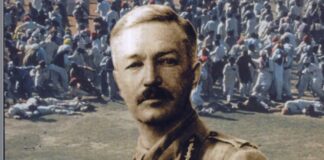
The fourth Session of the Eighth Parliament is scheduled to be ceremonially opened at 10 am today, January 3, by President Gotabaya Rajapaksa. That will be followed by the delivery of the government’s policy statement, which is traditionally known as the Throne Speech, though Sri Lanka has long ceased to be a British colony. What this speech signifies is that Sri Lankan parliament upholds the Westminster parliamentary traditions. It is being argued in some quarters that the policy statement is yet another vestige of colonial rule and, therefore, should be discontinued. Parliament, however, has to maintain some traditions which may seem anachronisms to some. Following the enactment of the second republican Constitution in 1978, the government’s policy statement delivered by the president replaced the Throne Speech.
Unlike in the past, when the Governor General made the traditional Throne speech, under the current system, the Throne Speech or the government’s policy statement is seen as a projection of presidential power.
A very high social and political importance is traditionally attached to a policy statement made by a President, at the commencement of a new session of Parliament, as it outlines his or her government’s agenda for the years to come.
The First Session of the First Parliament was held on Oct 14, 1947. It was ceremonially opened and presided over by Governor Sir Henry Monck-Mason Moore. He delivered the throne speech, which was debated by Parliament and passed by a vote of thanks. The Third Session of the Second Parliament was inaugurated by Queen Elizabeth II. She ceremonially inaugurated the session on April 12, 1954. The throne speech was read by the Queen herself, and no debate was held on it. Later, the new session of Parliament was inaugurated with or without inaugurating ceremonies.
Interestingly, President Maithripala Sirisena delivered his first policy statement on Sept 1, 2015. In that he described his statement as a keynote address: “By my address today, another tradition of the parliament democracy is being fulfilled. This keynote address, which is known as the Throne Speech according to British tradition and as the Inaugural Speech according to American democracy is the presentation of the official policy statement of the new government to the parliament.”
Usually, the delivery of the policy statement is a one-way affair as there is no room for cross-talk or debate. As per the practice in the past, however, at the end of the delivery of the policy statement, an MP could ask for a debate. At the end of that debate, the House could be moved for a vote. In the past,

Parliament had to be dissolved if the government lost a vote on the Throne Speech. Prime Minister Dudley Senanayake’s UNP government, formed in March 1960, collapsed following the defeat of a vote on Sir Oliver Goonetilleka’s Throne Speech in April. A few months later, Sirimavo Bandaranaike became Prime Minister after winning a general election. The JVP has said it will ask for a debate on the presidential policy statement to be delivered shortly and a division thereafter. Whether it will do so remains to be seen.
A government does not have to step down in case of losing a debate on a presidential speech at the commencement of a parliamentary session. But, some Constitutional experts are of the view that there is express provision in Article 49 (2) for the Cabinet of Ministers to stand dissolved upon the defeat in Parliament of the statement of government policy. Article 70 (1) (b) prevents the dissolution of parliament upon the rejection of the statement of the government policy at the commencement of the first parliamentary session following a general election. Therefore, it could be presumed that Parliament could be dissolved if the policy statement is rejected at the beginning of a subsequent session.
Usually the throne speeches or presidential policy speeches are prepared ones. They are listened to or read by the people and analyzed in detail by the Opposition, policy planners, members of the diplomatic corps, the media, think tanks, civil society and others leaders. They comment on the contents, for the policy statements have far reaching effects.
The presidential address is delivered from the Chair of the Speaker. As per the provisions of the Article 33 (b) of the Constitution, the Speaker sits on a seat immediately below the Chair when the Presidential Address is delivered.
There are instances where presidents skipped policy speeches when sessions were opened after prorogation.
The President arrives in the Parliamentary premises in a motorcade with a mounted police escort on either side and is accorded a 21-gun salute. Full military honours are accorded on the new Commander-in-Chief, cannon boom while an impressive guard of honour follows amidst bugle calls before schoolgirls chant Jaya Mangala Gatha hailing the new President. The Speaker, the Secretary General of Parliament, the Sergeant-at-Arms and his deputy welcome the President after the tri-service guard of honour before being led to the Chambers to deliver his policy statement.
Similar arrangements are being made for the today’s opening of the new Parliamentary session. It is scheduled to commence with the arrival of the special invitees at 9.00 a.m. The arrival of the MPs will take place first followed by the arrival of Speaker of Parliament Karu Jayasuriya, Prime Minister Mahinda Rajapaksa and President Gotabaya Rajapaksa. Speaker Jayasuriya and the Secretary General of Parliament Dhammika Dasanayaka will welcome President Rajapaksa at the main staircase leading to the Parliament building followed by hoisting of the National flag by the President.
The President is scheduled to chair the inaugural meeting at 10.00 am. After making the policy statement the President will adjourn the parliamentary session.


 Logging you in...
Logging you in... Loading IntenseDebate Comments...
Loading IntenseDebate Comments...

